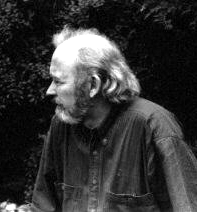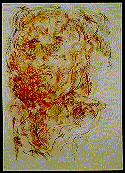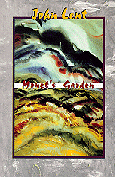
John Lent - Biography
 John Lent was born in Antigonish, Nova Scotia in 1948; he grew
up in Edmonton, Alberta. He studied at the University of Alberta from 1965-71,
concentrating in his graduate studies on Modernist art movements and experiments
with form. He was taught by the noted Canadian novelist, Sheila Watson,
and the Canadian playwright, Wilfred Watson. Lent's thesis was on the plays
of T.S. Eliot: an analysis of "the schizophrenic adjustment we all have
to make to the demands of Western society--a society that imposes material,
social and spiritual roles" (19). Lent pursued Doctoral studies at York
University on Malcolm Lowry and the issue of subjectivity. For the last
twenty years he has taught English literature and Creative Writing at a
number of Universities: Alberta, Notre Dame (Nelson), Regina, and Okanagan
University College. Lent currently lives and teaches in Vernon,
British Columbia.
John Lent was born in Antigonish, Nova Scotia in 1948; he grew
up in Edmonton, Alberta. He studied at the University of Alberta from 1965-71,
concentrating in his graduate studies on Modernist art movements and experiments
with form. He was taught by the noted Canadian novelist, Sheila Watson,
and the Canadian playwright, Wilfred Watson. Lent's thesis was on the plays
of T.S. Eliot: an analysis of "the schizophrenic adjustment we all have
to make to the demands of Western society--a society that imposes material,
social and spiritual roles" (19). Lent pursued Doctoral studies at York
University on Malcolm Lowry and the issue of subjectivity. For the last
twenty years he has taught English literature and Creative Writing at a
number of Universities: Alberta, Notre Dame (Nelson), Regina, and Okanagan
University College. Lent currently lives and teaches in Vernon,
British Columbia.
Lent's literary writing may loosely be categorized in three groups:
the published poetry, the published fiction, and the unpublished fiction
and notebooks. The categories are loose, though, as the following descriptions
attest. A Rock Solid (1978) is a combination of prose passages and
poems. That first volume's experimentation is captured in the long, untitled,
cover poem, where Lent suggests to the reader that we "Read this as an
attempted prelude / Like the wash you have to use first if you're working
in a watercolor / It's a base for the colors, the figures, the worlds which
follow." Lent 1978 n.p.) The relationship between words and painting, tied
to the acoustic suggestion in the title of the volume, stress the inter-related
concerns the writer has with a totality of sensuous experience; it is a
sister arts manifesto in the created practice of poetry rather than
intellectual theorizing on it. Mike Utenbogaart's cover photograph, in
black and white printed `wash' underscores the necessity of geography,
of place, but especially the subjective rendition of it. Dianne Bersea's
cover design for Wood Lake Music (1982), a long poem, with the narrative
complexity of a novel, continues in the same vein. The emphasis is on landscape
again, but a greater sense of mood is evoked by the darkened skies and
the clouds descending, almost enveloping, the landscape.  It is in tune
with the sense of foreboding the narrator's consciousness penetrates in
the world surrounding day-to-day rituals of renewal. Frieze (1984)
a collection of poetry, has the scope, character development, and the descriptive
power of the best non-fiction travelogues. Jude Clarke's cover painting
captures the volume's alternation between concerns with landscape (the
expressionist mountain scene and cloud cover) and subjectivity (the wispiness
of a human head and its more concrete, grounded shoulders in the mountain
ridge.) Landscape is less central to Ann Kipling's fluid cover portrait
of the author on The Face in the Garden (1990). It does, however,
stress consciousness and the difficulty of pinning down the individual
subject. The same is true of Lent's weave of prose and poetry to offer
external and internal states of consciousness. Both the author's painting
and the linguistic dexterity underscore the sense of mobility as a theme
in life and of the literature.
It is in tune
with the sense of foreboding the narrator's consciousness penetrates in
the world surrounding day-to-day rituals of renewal. Frieze (1984)
a collection of poetry, has the scope, character development, and the descriptive
power of the best non-fiction travelogues. Jude Clarke's cover painting
captures the volume's alternation between concerns with landscape (the
expressionist mountain scene and cloud cover) and subjectivity (the wispiness
of a human head and its more concrete, grounded shoulders in the mountain
ridge.) Landscape is less central to Ann Kipling's fluid cover portrait
of the author on The Face in the Garden (1990). It does, however,
stress consciousness and the difficulty of pinning down the individual
subject. The same is true of Lent's weave of prose and poetry to offer
external and internal states of consciousness. Both the author's painting
and the linguistic dexterity underscore the sense of mobility as a theme
in life and of the literature. Each volume, then, reiterates the sister arts concerns graphically
(encompassing all of this word's meaning). Monet's Garden is a discontinuous
narrative of asymmetrical structure that lightly echoes Hemingway's In
Our Time ( a point that author makes elliptically in a Journal
entry, dated 18 May 1991), and McLaverty's Walking the Dog--an interweaving
of connected stories with elliptical, interconnected pieces on the narrator
of the book. Jude Clarke's cover painting, while reminiscent of the cover
for Frieze--reality and its abstract representation of landscape--offers
a bold use of colour, where the foreground's realism and vivacity suggest--as
do her other paintings of that time--an artistic rebirth. The content of Monet's
Garden is archetypal Lent: subjectivity, consciousness, lyrical landscapes,
the horrors and joys that the apparently banal in life contain. And, the
sense of mobility, shared with the English writer Virginia Woolf, who remarks
upon getting a car:
Each volume, then, reiterates the sister arts concerns graphically
(encompassing all of this word's meaning). Monet's Garden is a discontinuous
narrative of asymmetrical structure that lightly echoes Hemingway's In
Our Time ( a point that author makes elliptically in a Journal
entry, dated 18 May 1991), and McLaverty's Walking the Dog--an interweaving
of connected stories with elliptical, interconnected pieces on the narrator
of the book. Jude Clarke's cover painting, while reminiscent of the cover
for Frieze--reality and its abstract representation of landscape--offers
a bold use of colour, where the foreground's realism and vivacity suggest--as
do her other paintings of that time--an artistic rebirth. The content of Monet's
Garden is archetypal Lent: subjectivity, consciousness, lyrical landscapes,
the horrors and joys that the apparently banal in life contain. And, the
sense of mobility, shared with the English writer Virginia Woolf, who remarks
upon getting a car:
What I like, or one of the things I like, about motoring is
the sense it gives one of lighting accidentally, like a voyager who touches
another planet with the tip of his toe, upon scenes which would have gone
on, have always gone on, will go on, unrecorded, save for this chance glimpse.
(Woolf 153)
Both writers seek to record those moments, as scenes from without,
and the ways they impinge upon the consciousness within. That Monet's
Garden has hit the alternative bestseller lists, displacing a Governor
General award winning The Englishman's Boy by Guy Vanderhaeghe,
is testament to its author's discovery of an audience keen on careful writing
and complex subject matter, testament to that writer's perseverance in
his search for a place for our lives in the world of literature.
Works Cited
Lent, John. The Face in the Garden. Saskatoon: Thistledown,
1990.
----. Frieze. Saskatoon: Thistledown, 1984.
----. Extracts from the Journals. April to July 1991.
Unpublished manuscript.
----. Monet's Garden. Saskatoon: Thistledown, 1996.
----. A Rock Solid. Dreadnought, 1978.
----. "Schizophrenic Patterns in the Plays of T. S. Eliot." University
of Alberta. Master's Thesis. Spring, 1971.
----. Wood Lake Music. Vancouver: Harbour, 1982.
Woolf, Virginia. The Diary. Ed. Anne Olivier Bell, asst.
by Andrew McNeillie. 5 vols. London: the Hogarth Press, 1977-84. III: 153.



 John Lent was born in Antigonish, Nova Scotia in 1948; he grew
up in Edmonton, Alberta. He studied at the University of Alberta from 1965-71,
concentrating in his graduate studies on Modernist art movements and experiments
with form. He was taught by the noted Canadian novelist, Sheila Watson,
and the Canadian playwright, Wilfred Watson. Lent's thesis was on the plays
of T.S. Eliot: an analysis of "the schizophrenic adjustment we all have
to make to the demands of Western society--a society that imposes material,
social and spiritual roles" (19). Lent pursued Doctoral studies at York
University on Malcolm Lowry and the issue of subjectivity. For the last
twenty years he has taught English literature and Creative Writing at a
number of Universities: Alberta, Notre Dame (Nelson), Regina, and Okanagan
University College. Lent currently lives and teaches in Vernon,
British Columbia.
John Lent was born in Antigonish, Nova Scotia in 1948; he grew
up in Edmonton, Alberta. He studied at the University of Alberta from 1965-71,
concentrating in his graduate studies on Modernist art movements and experiments
with form. He was taught by the noted Canadian novelist, Sheila Watson,
and the Canadian playwright, Wilfred Watson. Lent's thesis was on the plays
of T.S. Eliot: an analysis of "the schizophrenic adjustment we all have
to make to the demands of Western society--a society that imposes material,
social and spiritual roles" (19). Lent pursued Doctoral studies at York
University on Malcolm Lowry and the issue of subjectivity. For the last
twenty years he has taught English literature and Creative Writing at a
number of Universities: Alberta, Notre Dame (Nelson), Regina, and Okanagan
University College. Lent currently lives and teaches in Vernon,
British Columbia. It is in tune
with the sense of foreboding the narrator's consciousness penetrates in
the world surrounding day-to-day rituals of renewal. Frieze (1984)
a collection of poetry, has the scope, character development, and the descriptive
power of the best non-fiction travelogues. Jude Clarke's cover painting
captures the volume's alternation between concerns with landscape (the
expressionist mountain scene and cloud cover) and subjectivity (the wispiness
of a human head and its more concrete, grounded shoulders in the mountain
ridge.) Landscape is less central to Ann Kipling's fluid cover portrait
of the author on The Face in the Garden (1990). It does, however,
stress consciousness and the difficulty of pinning down the individual
subject. The same is true of Lent's weave of prose and poetry to offer
external and internal states of consciousness. Both the author's painting
and the linguistic dexterity underscore the sense of mobility as a theme
in life and of the literature.
It is in tune
with the sense of foreboding the narrator's consciousness penetrates in
the world surrounding day-to-day rituals of renewal. Frieze (1984)
a collection of poetry, has the scope, character development, and the descriptive
power of the best non-fiction travelogues. Jude Clarke's cover painting
captures the volume's alternation between concerns with landscape (the
expressionist mountain scene and cloud cover) and subjectivity (the wispiness
of a human head and its more concrete, grounded shoulders in the mountain
ridge.) Landscape is less central to Ann Kipling's fluid cover portrait
of the author on The Face in the Garden (1990). It does, however,
stress consciousness and the difficulty of pinning down the individual
subject. The same is true of Lent's weave of prose and poetry to offer
external and internal states of consciousness. Both the author's painting
and the linguistic dexterity underscore the sense of mobility as a theme
in life and of the literature. Each volume, then, reiterates the sister arts concerns graphically
(encompassing all of this word's meaning). Monet's Garden is a discontinuous
narrative of asymmetrical structure that lightly echoes Hemingway's In
Our Time ( a point that author makes elliptically in a Journal
entry, dated 18 May 1991), and McLaverty's Walking the Dog--an interweaving
of connected stories with elliptical, interconnected pieces on the narrator
of the book. Jude Clarke's cover painting, while reminiscent of the cover
for Frieze--reality and its abstract representation of landscape--offers
a bold use of colour, where the foreground's realism and vivacity suggest--as
do her other paintings of that time--an artistic rebirth. The content of Monet's
Garden is archetypal Lent: subjectivity, consciousness, lyrical landscapes,
the horrors and joys that the apparently banal in life contain. And, the
sense of mobility, shared with the English writer Virginia Woolf, who remarks
upon getting a car:
Each volume, then, reiterates the sister arts concerns graphically
(encompassing all of this word's meaning). Monet's Garden is a discontinuous
narrative of asymmetrical structure that lightly echoes Hemingway's In
Our Time ( a point that author makes elliptically in a Journal
entry, dated 18 May 1991), and McLaverty's Walking the Dog--an interweaving
of connected stories with elliptical, interconnected pieces on the narrator
of the book. Jude Clarke's cover painting, while reminiscent of the cover
for Frieze--reality and its abstract representation of landscape--offers
a bold use of colour, where the foreground's realism and vivacity suggest--as
do her other paintings of that time--an artistic rebirth. The content of Monet's
Garden is archetypal Lent: subjectivity, consciousness, lyrical landscapes,
the horrors and joys that the apparently banal in life contain. And, the
sense of mobility, shared with the English writer Virginia Woolf, who remarks
upon getting a car: